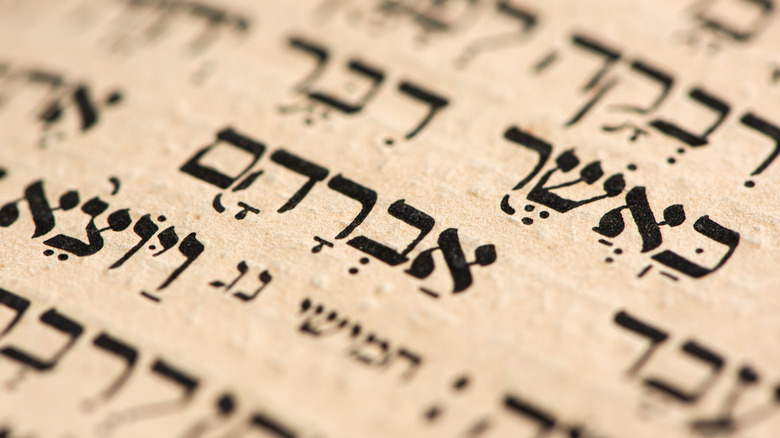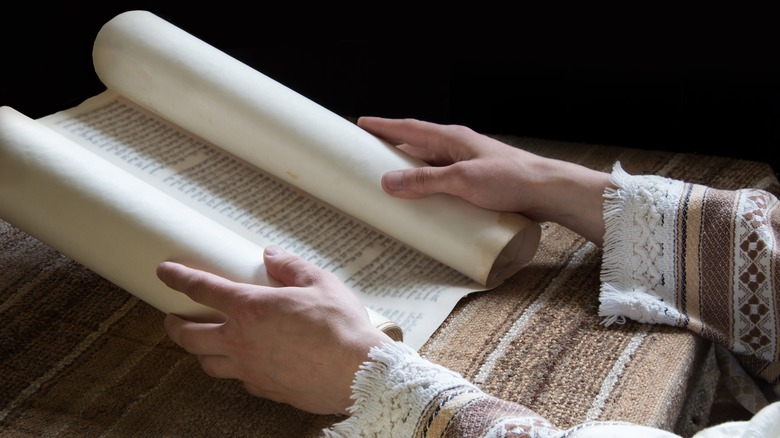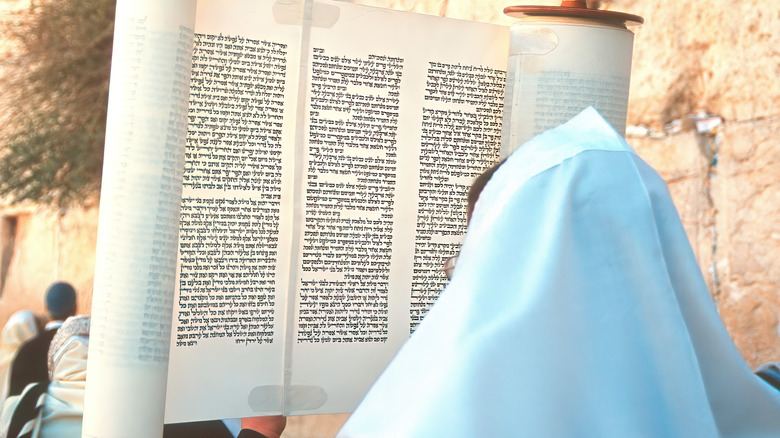The Torah And The Talmud: What's The Difference?
Ancient doctrines of theological practice are some of the most prominent and influential works of literature and cultural zeitgeists in history. The Bible has often been called "the greatest story ever told," but many of the stories within it are renditions of one another or bear different interpretations across religions. Islam, Catholicism, Christianity, Hinduism, and Judaism all have their own distinguished approach to worship and day-to-day practices that make up the apparatus of widespread religious practice.
According to History, Judaism is the world's oldest monotheistic religion on record and dates back as far as 4,000 years. Unlike the Christ-focused approach to Christianity/Catholicism, the Jewish people believe that their messiah has yet been revealed to the inhabitants of Earth. Between the U.S. and Israel (the two most prominent conglomerations of Jews in the world), there are about 14 million practitioners of the ancient religion. Some people talk about the Old Testament and the New Testament in regard to the Christian religion, and Judaism has a similar convergence of manuscripts in its own way, though there are obvious differences.
The Torah and the Talmud are the two pillars of the Jewish religion. You may have heard them mentioned in passing, but some wonder what the difference is between the two. Yes, they're independent documents, but they also work in conjunction with each other.
What does the Talmud say?
The function of the Talmud is, for all intents and purposes, to provide a rudimentary starting point for Jewish practice. It's rich with history, fundamental laws, outlooks, and traditions. The idea behind studying the Talmud is essentially to study it as opposed to explicitly practicing it. The English translation of the Hebrew word Talmud is "learning," so if you're looking to start practicing Judaism, here's where you'd likely start. Without the Talmud, the Torah would have little bearing on the religion's general direction, which is why it's often regarded as the more important of the two (via Difference Between).
This might sound like nothing more than a nuance, but the small things actually matter more than you'd think in faiths across the world. The Talmud provides a bedrock for organization and systematic practices outlined in the Torah, which is why it's studied as opposed to simply read in the definitive sense (per My Jewish Learning). Think of it as a sort of blueprint. The Talmud contains the "six orders of Mishnah," which predates both the Talmud and the Torah and was initially perpetuated between generations orally (via Difference Between).
What does the Torah say?
Now let's talk about the Torah, which is the document you've probably heard mentioned most often. The Torah, or the five books of Moses, is the Jewish equivalent of the Old Testament in Christianity. It's where the rubber hits the road as far as practical application goes. It contains all traditions in the Jewish religion, and it's often considered the Bible of Judaism (it actually outlines the biblical chapters of Genesis, Exodus, Leviticus, Numbers, and Deuteronomy). In the English translation of the word Torah is "instruction" (via Difference Between).
Britannica explains that the Torah is "God's revealed teaching or guidance for humankind." Again, this is where tangible practice comes in and its readings are often referenced during ceremonies at synagogs. There are certain factions of Judaic practice that actually declare the Torah as the more important of the two documents, though perspectives vary across the entirety of the faith at large (per Difference Between).


